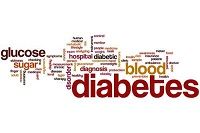Diabetes Guidelines May Not Apply to Oldest Patients
Treating diabetes in the frail elderly may require different treatment goals.

Treating diabetes in the frail elderly may require different treatment goals according to a new study by researchers from Rotherham General Hospital and Diabetes Frail, Ltd., in the UK.
In old age, diabetes is associated with high comorbidity burden and increased prevalence of geriatric syndromes including frailty. Weight loss and malnutrition are common characteristics of frailty, and they can lead to hypoglycemia and normalization of blood glucose levels, sometimes called “burnt-out diabetes.”
Ahmed H. Abdelhafiz, MD, FRCP, lead Consultant Geriatrician and Honorary Senior Clinical Lecturer, Department of Elderly Medicine, Rotherham General Hospital, Rotherham, UK, reviewed Medline and Embase reports published between January 1969 and November 2015 to examine the effect of frailty on the natural history of diabetes and implications for therapies in older people. The article was published online February 12 in the open access journal Future Science OA.
They observed that frailty may change the natural history of type 2 diabetes from one that becomes progressively more advanced to a regressive course with an increased risk for hypoglycemia.
"Although guidelines have suggested a relaxed glycemic control in frail elderly with diabetes, this may not be enough and complete withdrawal of hypoglycemic medications may be necessary in these frail populations," said Abdelhafiz. "Normoglycemia has been shown in chronic wasting diseases and in frail populations, which led to safe and successful withdrawal of hypoglycemic medications.
The main determinants of successful withdrawals of hypoglycemic medications were significant weight loss, and development of multiple comorbidities including dementia,” he added.
They recommend that fit older people with new onset diabetes aim for an HbA1c of 7 percent, while for older people with comorbidities and established diabetes an HbA1c of 7.5 to 8 percent may be more appropriate.
They suggest that for frail older people, short-term day-to-day targets of between 4 and 15 mmol/L or about 8 to 9 percent may be a safe balance to avoid hyper and hypoglycemia.
“This review therefore outlines the importance of regular medications review with consideration of gradual reduction or complete withdrawal when frailty and significant weight loss emerge,” Abdelhafiz said of the results.